1000 kinds of plants and flowers, there is always one you like
Foliage animals:
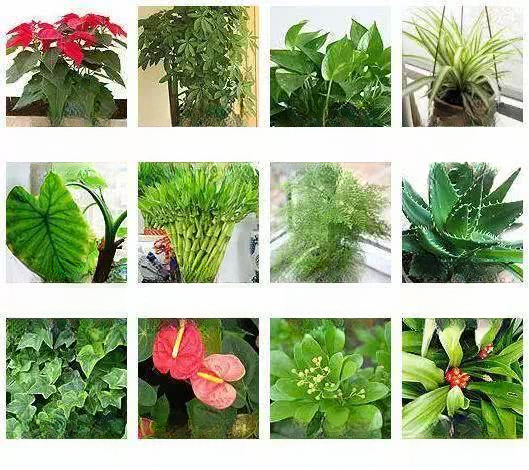
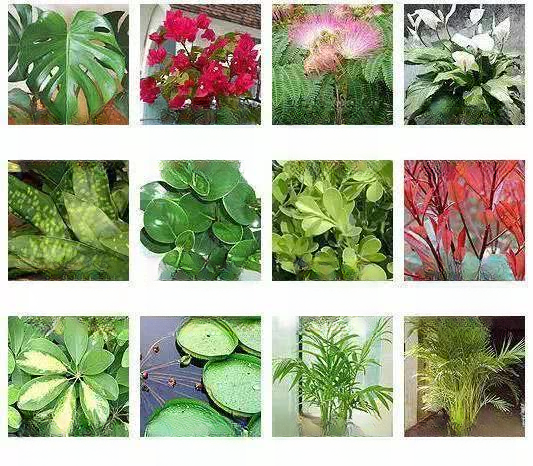
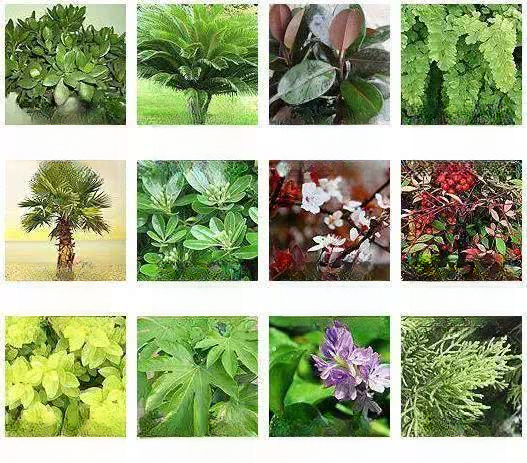
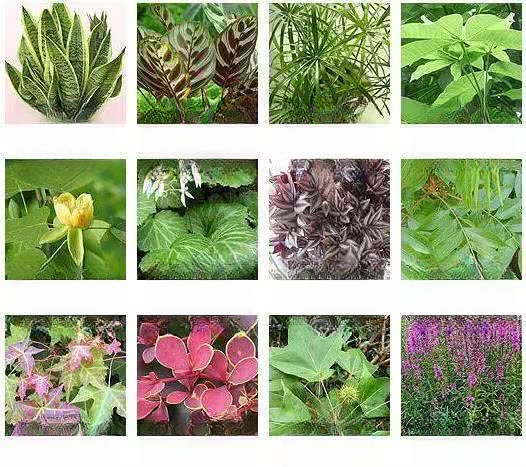

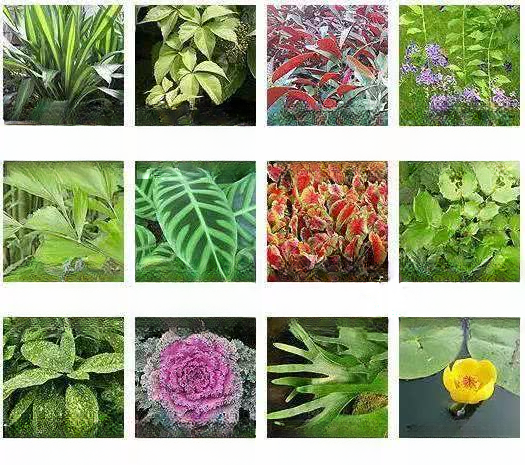

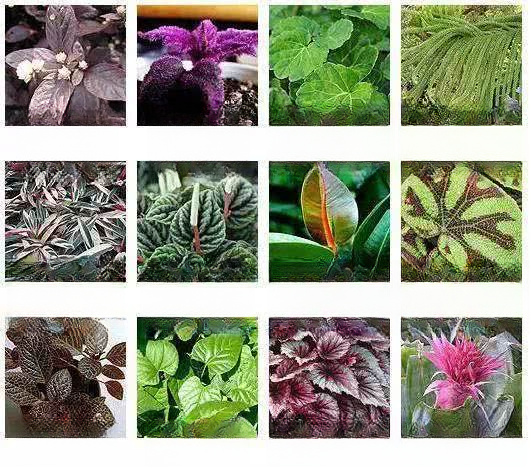
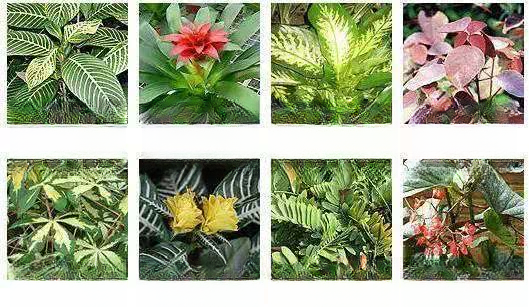
1. The Hulk
The Hulk is commonly known as the Hulk White Palm and belongs to the Araceae family and the Spathiphyllum genus.
Origin and Habits: The Hulk is a perennial shade-living herb. It is mainly distributed in Colombia and is one of the most popular indoor foliage plants in Europe and the United States. The Hulk likes shade, cool, moist environment and fertile soil, and avoids drought, high temperature and direct sunlight. It can grow all year round in tropical and subtropical areas.
Morphological characteristics: The height of the Hulk plant can reach 95 cm, with broad oval leaves, entire, leathery, thick and dark green leaves, slightly covered with white powder, and petioles up to 43 cm long. The flower-shaped spathe inflorescence is long spoon-shaped, and the flower color changes from white to green within 25 days. The inflorescence can reach 1 meter in length, and the spadix is about 15 cm in length. The flowering period is late spring and early summer.
Reproduction technology: Hulk can be propagated by division and tissue culture. Before the growth point is broken, it will not sprout until it grows to maturity. If the growth point is artificially destroyed, each plant can tiller 3 to 5 buds. Although the seedlings are strong, the shape is not as beautiful as the tissue culture seedlings. This method can be adopted for family self-propagation.
Management techniques: When cultivating the green giant, water should be poured thoroughly during the test tube seedling period to maintain an air humidity of more than 80%. After the seedlings are formed, water should be poured thoroughly every 1 to 2 days. In summer, spray water on the leaves to remove dust, reduce temperature, prevent sunburn, and increase air humidity. In order to make the plant grow dignified and symmetrical, the placement angle should be adjusted every six months. The key to the growth of the green giant is whether the base fertilizer is sufficient. In addition, depending on the growth conditions, water fertilizer or inorganic nitrogen fertilizer can be applied monthly or irregularly to promote leaf growth, deepen leaf color, and maintain the best viewing state.
Green Giant has strong resistance to diseases and pests. When ventilation is poor, aphids and green stink bugs may occasionally damage the heart leaves. Strengthening ventilation can prevent them, and potting should be done with leaves touching each other. Once insects are found, they can be wiped out manually or killed with pesticides.
Ornamental value: The Hulk plant is majestic and majestic, with an extraordinary bearing. The gradient color of the flowers can bring endless imagination to people. It is an ideal potted flower for decorating large halls and rooms such as hotels, and it is also very stylish when placed in larger family rooms.
2. Wine bottle orchid
The bottle orchid is an evergreen small tree of the Agavaceae family and the bottle orchid genus.
Origin and Habits: Bottle orchids are native to Mexico. They like plenty of sunshine, relatively fertile soil, sandy loam, drought tolerance, and strong cold tolerance. They can overwinter in the open field in Hainan and the southern coast of South China, and other regions adopt different degrees of insulation measures.
Morphological characteristics: The wild wine bottle orchid is 2 to 3 meters tall; the potted plant can reach 1 meter in height. The stem is peculiar in shape, and the base of the stem is particularly swollen, shaped like a wine bottle. The swollen part has a thick cork layer of bark, and cracks into small squares. The leaves are slender, linear, thin leathery, and drooping; the leaf margins are finely serrated; the length can reach 1.5 to 2 meters.
Reproduction and cultivation: Wine bottle orchids are mostly propagated by sowing. From April to November, it is forbidden to move the flower pot and direction during the growth period of wine bottle orchids to ensure that they occupy a fixed territory. At this time, sufficient water and nutrients can be given to promote the expansion of the stems. According to the dryness and wetness of the potting soil and the depth of the leaf color, water and fertilize in a timely and appropriate manner, without water accumulation or water loss; from January to March, the water should be strictly controlled, and only water once a month with water that is the same as the room temperature. When fertilizing, do not apply raw fertilizers or concentrated fertilizers. In addition, you can spray dimethoate or dimethoate once a month, and spray 1 to 2 times of chlorothalonil every year, which can greatly improve the ability of wine bottle orchids to resist cold.
Ornamental value: The stem of the bottle orchid is upright and plump, the leaves are bright and smooth, and its appearance is peculiar. It is a rare ornamental flower.
3. Areca palm
Areca palm is an evergreen shrub of the palm family.
Origin and Habits: Originally from Madagascar, it is a plant that is hard to grow in pots in many places. Areca palm likes a warm and humid environment, and is light-loving and shade-tolerant. It grows slowly in height but develops quickly in crown width, and has good natural pruning. It requires slightly acidic, well-ventilated sandy loam, and avoids alkaline soil.
Morphological characteristics: plant height 3-4 meters. Stems branch from the ground with ring patterns; leaves expand and arch, up to 2 meters long, petioles are smooth, yellow, pinnae are lanceolate, 60 cm long, soft at the tip, with 3 raised main veins on the back; flowers are small, in clusters, golden yellow, and bloom from March to April.
Reproduction technology: Areca palm can be propagated by sowing or division. Generally, potted plants are propagated by division. Division can be propagated all year round, but autumn is the best time. Select well-developed branches from the healthy mother plant, cut them off from the roots, move them into a new pot and replant them. For newly planted plants, because the root system is not yet well developed, long-term exposure to strong light should be avoided. Water appropriately, spray water on the leaves several times a day to keep the leaves moist. Keep the temperature at around 20-25℃, and it will grow normally in about 20 days.
Management techniques: Indoor potted Areca palms should be planted in slightly acidic soil. In the north, it is important to choose sandy loam with a high humus content. Watering should follow the principle of "dry through and wet through" according to the season. In dry and hot seasons, water more appropriately, and in low temperature and rainy seasons, control watering. In northern regions, especially where the water contains more salt and alkali, it is important to frequently use black alum to adjust the acidity of the soil. Liquid fertilizer can be applied all year round. In summer, nitrogen-containing organic fertilizer can be appropriately applied. In winter, organic fertilizers such as sesame paste residue can be applied. Rotate the flower pot regularly, frequently trim the lower and internal dead leaves, and pay attention to trimming the crown shape. In winter, the indoor temperature must be kept above 10°C.
Ornamental value: The Areca palm plant is tall, with drooping green leaves. It will look particularly majestic when arranged as a potted plant in the north, in living rooms and halls.
4. Rubber Tree
The rubber tree, also known as Indian banyan, is an evergreen shrub or tree belonging to the Moraceae family and the genus Ficus.
Origin and Habits: Originated from India and Malaysia, it is widely distributed in China, with about 120 species. Rubber trees prefer warm and humid environments, and thrive in greenhouses at 30°C in summer. The lowest temperature in winter is generally above 10°C. They prefer an environment with sufficient light and good ventilation, and require fertile soil.
Morphological characteristics: The rubber tree is an evergreen large tree, which can reach a height of more than 30 meters. The whole plant is smooth, with latex in the cortex and air roots on the stem. The leaves are oblong to elliptical, 10 to 30 cm long, dark green on the surface, light yellow-green on the back, entire, leathery, and red stipules; the flowers are solitary and monoecious. The round-leaved rubber tree is an evergreen small shrub, 50 to 80 cm high and branched. The leaves are broadly obovate, broadly rounded, narrow at the base, 1.5 to 5 cm long, leathery, dark green on the surface, and dark glands in the vein axils; the cryptic inflorescence is spherical to pear-shaped, about 6 to 80 mm in diameter, solitary, and yellow or reddish when mature.
Reproduction technology: Rubber tree propagation is mainly by cuttings, which are cuttings from technical cuttings or buds and leaves. They are very easy to root and can be cut indoors all year round. Cuttings in summer, when the temperature is kept at 18-25℃, will take root in 2-3 weeks. Seedlings can also be raised outdoors in the field in summer.
Management techniques: Rubber tree culture soil is a mixture of loam and leaf humus and applied with decomposed farmyard manure. Due to its rapid growth, sufficient water and fertilizer should be provided during cultivation. In addition to basal fertilizer, thin fertilizer water should be applied at least once a month, and sufficient light should be provided in summer. Potted plants are generally repotted once every 2 to 3 years according to the growth status. Secondly, because the leaves of rubber trees are large and lush, and the respiration and transpiration are strong, the leaves should be sprayed with clean water frequently, or scrubbed with beer, which can play a role in fertilization and make the leaves shiny and green.
Ornamental value: Rubber trees are common garden trees or potted foliage plants. The leaves are green all year round and quite beautiful. In the south, they are often used for garden greening and beautification; in western regions, they are mostly indoor potted plants for decorating hotels, conference halls, beautifying study rooms, living rooms, etc. They are deeply loved by people whether for viewing leaves or for viewing their shapes.
5. Araucaria
Araucaria is also known as Araucaria heterophylla, which belongs to the Araucariaceae family and the Araucaria genus.
Origin and Habits: Araucaria is native to Norfolk Island in Oceania and northeastern Australia. It is cultivated as a landscape tree in Guangdong, Hainan, Fujian and other places. It is often seen in potted plants for viewing in places north of the Yangtze River. Araucaria tolerates shade, but is not cold-resistant or drought-resistant. It likes warm and humid climates and has strong resistance to diseases, insects and pollution. The suitable growth temperature is 10-25℃, and the minimum temperature in winter should be kept above 5℃.
Morphological characteristics: Araucaria is an evergreen tree with a spire-shaped crown. The branches are regular and horizontal, and the twigs are flat or drooping, and fall off in winter; the leaves of young leaves or twigs are soft, sickle-shaped, and about 1.5 cm long. The leaves on large trees and old branches are ovate or triangular-ovate, about 0.6 cm long. Potted plants are generally 1 to 2 meters high.
Reproduction technology: Araucaria can be propagated by sowing or cuttings. Araucaria planted in the north rarely bears seeds, so cuttings are often used for propagation. In spring, collect the upright new shoots or long branches that emerge from the lateral buds as cuttings (if the lateral branches or weak branches are used as cuttings, the crown shape of the cultivated plants will be irregular and lose their ornamental value). The cuttings are 7 cm long and can take root when inserted into a greenhouse sand bed with a temperature of 13-16°C and a relative air humidity of 60-80%. Or cut the top of the young tree, wait for the upright new shoots to emerge from the lateral buds at the top, and then cut the branches for cuttings in spring.
Seed propagation: It is best to break the seed coat before sowing to promote germination. Seed-sown seedlings have long taproots and few fibrous roots, which can easily cause seedling death when transplanted. Grasping the key points of root protection, thin planting, heat preservation, and shading can improve the survival rate of seedlings. Seedlings with broken roots can be washed with clean water and inserted into plain sand. They can re-root from the broken surface in 1 to 2 weeks at a suitable temperature. Seedlings with broken buds, broken stems, and leaves can be planted as usual. After surviving, new buds will sprout after a certain period of time.
Management techniques: Araucaria loves light and needs full light, but avoid strong light. Place it outdoors in the shade or semi-shade in summer. If placed in a cold, dark place for a long time, the plant will grow thin and tall. In September, it should be moved into a cold room with no frost and good light. The temperature should change gradually, and the ideal temperature after October is 5-10℃. Water the plant regularly during the growing season and keep the soil moist in winter. If the pot soil is too dry in summer, the amount of water is too large in winter, and the relative air temperature is below 60%, the lower leaves will become soft and droopy. In winter, too dark light or too high temperature will cause the needles to fall off or turn yellow. Apply calcium-free fertilizer every two weeks during the growing season. Generally, the pot is changed in spring every 2-3 years to prevent the plant from growing too high. The pot soil is preferably a mixture of three parts loam, one part leaf mold, one part coarse sand and a small amount of plant ash. The depth of the soil layer should be controlled so that the rooting buds in the upper layer are just exposed on the soil surface.
Ornamental value: Araucaria has a beautiful shape and grows quickly. It can be planted in rows or solitary in courtyards. Young trees are precious foliage plants. In addition, Araucaria has excellent wood quality and is an important timber species in Australia and South Africa.
6. Boston Fern
Boston fern is a terrestrial fern foliage plant of the Nephropsaceae family and Nephrops genus.
Origin and Habits: Boston fern is produced in tropical or subtropical areas. It likes shade and humidity, is not strict about temperature, has strong cold resistance, and avoids direct sunlight. The cultivation soil requires looseness and good ventilation.
Morphological characteristics: Boston fern is a mutant of Nephrolepis. It has single pinnate compound leaves, and its pinnae are wider and more drooping than the original species. The pinnae are 90 to 100 cm long, lanceolate, and yellow-green. The leaflets are flat, with wavy margins and twisted leaf tips.
Reproduction techniques: Boston fern does not produce spore leaves and can only be propagated by division or runners. Division can be done all year round, but spring and autumn are the best times. After division, water thoroughly and place in the shade, and it will quickly resume growth.
Management techniques: For outdoor cultivation of Boston fern, about half (volume ratio) of expanded plastic artificial soil can be added to ordinary culture soil and mixed well. For indoor potted plants, pure expanded plastic artificial soil that is light, clean and hygienic can be used completely. Boston fern should be cultivated in a shade shed, with a shade curtain on the shed. It is better to cover it with a layer of colorless film, which can prevent rain and avoid direct sunlight. Water once a day during the growing season, preferably drip irrigation, to prevent the leaves from being stained with water droplets and turning yellow and rotting. In the hot summer, you can also spray water around the potted flowers to increase the humidity. In winter, you should control the water appropriately and keep it moist. Nitrogen fertilizer must be applied during the growing season. For outdoor cultivation, apply thin organic fertilizer water twice a month, and avoid polluting the leaves; for indoor cultivation, you can supplement the nutrient solution mainly composed of nitrogen once every two months. In order to ensure the beautiful shape of the plant and promote air circulation, the yellow and old leaves should be cut off in combination with shaping.
Ornamental value: The Boston fern has bright green leaves and an elegant shape. It is unique as a potted plant as an indoor decoration or as a wall-mounted or inlaid plant decorative material.
7. Asparagus fern
Asparagus fern is also known as cloud bamboo and mountain grass. It belongs to the Liliaceae family and the Asparagus genus.
Origin and Habits: Asparagus fern is native to South Africa. It likes warm, humid and semi-shaded environments and is not resistant to drought and frost. It requires soil rich in humus and good drainage.
Morphological characteristics: Asparagus fern is a perennial herb with smooth and thin stems that are climbing. The leaves are slender, horizontally spread, small, and about 3 to 5 mm long. The true leaves degenerate into scales or thorns. The flowers are small, bisexual, and white. The berries are spherical and purple-black. The flowering period is mostly from February to March or from June to July, and some flowers bloom twice in one look.
Reproduction technology: Asparagus fern is mostly propagated by sowing and division. Sowing is done in March and April, soaking seeds for 24 hours before sowing. Sowing in a 10 cm deep pot, covered with glass or plastic film, keeping the temperature at 20-25℃ and the pot soil moist, it will germinate in 20-30 days. Seedlings 5-10 cm high can be planted in a greenhouse or potted. 4-5 year old large plants can be propagated by division in spring.
Management techniques: Asparagus fern is a shade-bearing plant and should not be placed in a place with too much light, otherwise it will easily cause the branches and leaves to wither and turn yellow. Watering should be appropriate, and the pot soil should be kept moist and dry. Generally, watering is enough to moisten the topsoil. In the dry season, water should be sprayed on the leaves more often. Asparagus fern likes fertilizer. Apply a fully decomposed thin liquid fertilizer with nitrogen and potassium as the main ingredients or milk residue mixed with water once every 10 to 15 days. Asparagus fern grows fast, and weak, dense, old branches and dead stems should be thinned out at any time to facilitate ventilation and keep a low posture. Asparagus fern can also be planted in bamboo tubes, which have good water permeability and water retention, and do not need to drill holes in the bottom of the pot.
Ornamental value: Asparagus fern is mainly used as a potted plant for viewing leaves. It is fresh and elegant, and it can be placed in the study room to add a scholarly atmosphere. The roots, stems, and leaves of asparagus fern can be used as medicine and can be harvested throughout the year. Asparagus fern has slender branches and leaves, upright and beautiful, dense and green, and a chic posture. It is a good foil material for cut flowers, bouquets, and flower baskets.
8. Fake Betel Nut
Areca palm is a tall evergreen tree of the palm family.
Origin and habits: False betel nut is native to Oceania and can be cultivated in the open field in Guangdong, Hainan, Taiwan and other places. False betel nut likes high temperature, high humidity, windproof and sunny environment. It is mostly potted in the north, and the potting soil is preferably slightly acidic sandy loam with good drainage.
Morphological characteristics: The height of the false betel nut can reach more than 18 meters, with a ring-shaped stem, solitary and straight; the leaves are pinnate, 1 to 2 meters long, with slender leaflets clustered at the top, and the base of the petiole wraps around the stem, forming a circle of node scars after falling off; it usually blooms in summer, with drooping spike-like conical inflorescences, creamy yellow; the fruit is spherical, red.
Reproduction technology: False betel nut is mainly propagated by sowing. After the seeds are harvested, wash the pulp, soak the seeds in warm water for two days and then sow them. They should be transplanted as soon as they germinate. They grow slowly in their young stage and grow rapidly after they mature.
Management techniques: Apply basal fertilizer when planting the false betel nut, and apply thin liquid fertilizer every month during the vigorous growth season. The room temperature should not be lower than 10℃ in winter. Control watering during the dormant period to keep the pot soil moist, and repot once every 1 to 2 years.
Ornamental value: The tall and majestic plant of the false betel nut decorates the room with extraordinary grace. Its emerald green leaves fluttering in the wind make people feel as if they are in the tropical scenery.
9. Golden Amber
Golden Bark, also known as Yellow Thorn Bark, is the most attractive cactus species in the Cactaceae family and the genus Golden Bark. There are several main variants in the plant palm, such as White Thorn Bark Bark, Crazy Thorn Bark Bark Bark, Short Thorn Bark Bark Bark, Golden Bark Bark, Golden Bark Bark Crown, etc.
Origin and Habits: Golden Bark Bark is native to the desert region of Mexico and is now introduced and cultivated in the south and north. Golden Bark Bark likes plenty of sunlight and fertile, permeable sandy loam. During the hot summer, it should be properly shaded to prevent the ball from being burned by strong light.
Morphological characteristics: The stem of the golden barrel cactus is spherical, the ball is dark green, densely covered with yellow hard thorns, and the top of the ball is densely covered with golden wool; the flowers are yellow, borne at the top among the wool, of equal size, very beautiful and spectacular; the fruit is covered with scales and wool, and the seeds are black and smooth.
Reproduction technology: Golden barrel cactus is propagated by sowing and ball grafting. 1. Sowing method: The germination rate of seeds harvested in the current year is high. Sowing is carried out from May to September. 30 to 40 days after germination, the seedling ball is the size of rice grains or mung beans, and can be transplanted or grafted on the rootstock to accelerate growth. 2. Ball grafting method: The seedlings cultivated for more than 3 months are grafted on the tender cycad to accelerate growth. When the scion grows to a certain size or the rootstock cannot support it, it can be cut off, and the wound can be dried before cutting potted. In an environment with fertile soil and good air circulation, ungrafted seedlings grow very fast. After potting, the seedlings or grafted ball should be placed in a semi-shaded place, avoid direct sunlight, and the ball will not shrink after 7 to 10 days, which means it survives.
Management techniques: Golden Barkwood prefers sandy loam containing lime, which can be mixed with equal amounts of coarse sand, loam, leaf humus and a small amount of old wall ash. Repotting and soil change and cutting off old roots should be done once a year. Take the bulb out of the pot in mid-March and cut off the old roots without damaging the taproot. After cutting, place the bulb in a ventilated place for 4 to 5 days to allow the cut to air dry; the new culture soil used for repotting should be fermented livestock and poultry manure as base fertilizer, and coal ash, plant ash and a small amount of animal bone meal should be added and mixed well; the pot should be disinfected by sun drying, steaming and spraying to prevent bulb rot.
Golden Barberry likes plenty of sunshine, but semi-shade is suitable in summer. When the temperature reaches above 35℃, shade should be provided around noon to prevent strong sunlight from burning the sphere. Before 10 am or after 5 pm, it can be placed in the sun to promote the growth of flower buds, and avoid excessive shade, which will make the sphere elongated and reduce the ornamental value. The winter temperature should be maintained at 8-10℃, and the pot soil should be kept dry. When the temperature is too low, yellow spots will appear on the sphere. Protect it from rain in summer.
Summer is the peak season for the growth of golden barrel cactus, and the water demand increases. In case of drought, water frequently, preferably in the early morning and evening. Avoid watering with too cold water in the hot noon, which can easily cause "cold" and cause eczema. If the pot soil is too dry at noon, you can spray a little water to moisten the pot surface. Do not spray water on the top of the ball and the grafted part to avoid water accumulation and rot. During the growth period, apply 1 to 2 times a month with a thin fertilizer containing nitrogen, phosphorus, potassium and other ingredients, and use it with water. The organic fertilizer should be fully decomposed and the concentration should be appropriate.
Golden Barkwood is strong and disease-resistant, but due to humidity, heat, poor ventilation and other factors in summer, it is susceptible to pests and diseases such as red spider mites, scale insects, and whiteflies, so prevention and control should be strengthened. For red spider mites, use 40% dimethoate or 90% trichlorfon 1000-1500 times liquid spray for prevention and control. When scale insects and whiteflies are found to be harmful, they can be wiped out manually.
Ornamental value: Golden Bark has a long life span and is easy to cultivate. The flowers of mature golden bark are dense and strong, magnificent and golden, and have high ornamental value. Moreover, it is small in size and occupies little space, making it an ideal ornamental plant for urban family greening.
10. Fortune Tree
The scientific name of the money tree is Pachira aquatica, also known as the fortune tree, Malabar chestnut, and Central American kapok. It is an ornamental foliage plant of the Bombacaceae family and the genus Castanea (genus Central American kapok).
Origin and Habits: The Pachira aquatica is native to tropical America. It was introduced from Mexico in 1964 and cultivated in the specimen garden of Guangdong Academy of Forestry. It has now blossomed and borne fruit. It likes warm and humid conditions and requires good soil drainage. The growth temperature is moderate. The Pachira aquatica is not strict on light requirements. It can adapt well whether it is under strong light or in a room with weak light.
Morphological characteristics: The fortune tree is an evergreen tree that can reach a height of about 10 meters. The palmate compound leaves are alternate, with petioles 10 to 28 cm long; there are 5 to 9 leaflets, which are oblong, entire, with pointed front ends, about 10 to 22 cm long, pinnate veins, and short petioles. The flowers are solitary in the leaf axils, with 2 to 3 bracts, and the flowers are light yellow.
Reproduction technology: Money tree is usually propagated by sowing seeds and raising seedlings to propagate new plants. It can also be propagated by cuttings. Since seed seedlings have the characteristics of uniform germination, straight roots, easy braiding, and the ability to grow round and cute "radish heads", it has become a common reproduction method used by horticultural producers. However, currently a large number of seeds mainly come from abroad, and Hainan can produce a small amount.
It is easy to propagate the money tree by cuttings. It can be done all year round in southern China. Northern enthusiasts may wish to do it from May to August when the temperature is higher. The cuttings can be the tops or branches trimmed from potted plants, about 10 to 15 cm long, and inserted into the soil with little soil or loam, with a high survival rate. Compared with sowing seedlings, cutting seedlings have the defects of not expanding or only slightly expanding the head stem and the unsightly stalks. This method is not used in horticultural production and is limited to family fun cultivation.
Management techniques: The fortune tree requires heavy, moderately fertile, well-drained soil with a pH value of about 6.5. Generally, 6 parts of garden soil, 2 parts of decomposed organic fertilizer, 2 parts of coarse sand, or 8 parts of leaf mold, and 2 parts of coal slag are used to make the culture soil. The pot or tank should be at least 40 cm deep, which is conducive to the growth and development of the root system. In summer, it should be placed in a place with scattered light to avoid direct sunlight, and in winter, it should be placed in a bright place indoors. In winter, the room temperature should be kept at 15-25℃, and it should not be below 8℃, otherwise it is easy to suffer from cold damage, and the leaves will fall in the mild case, and the death will be severe. It is not easy to water the fortune tree too much to prevent water accumulation in the pot soil, causing root rot and leading to plant death. Water should be sprayed on the leaves every day to ensure that the leaves are emerald green. Appropriate application of phosphorus and potassium fertilizers can make the stems thick and present a vigorous and simple beauty. In spring, the branches should be pruned to promote the sprouting of new branches at the stem base, so that the new branches that grow are easy to tie and shape.
Ornamental value: The fortune tree has an elegant posture and bright colors. In addition to braiding, it can also be grafted into animal shapes such as deer, dogs, sea lions, and swimming dragons. It can be used for indoor greening decoration in major hotels, restaurants, shopping malls, and homes. It is extraordinary and is a good garden ornamental tree.
11. Poinsettia
Poinsettia, also known as poinsettia, ivory red, and old beauty, is an upright shrub of the Euphorbiaceae family and Euphorbia genus.
Origin and Habits: Poinsettia is native to Mexico and tropical America. It likes warmth and plenty of sunshine, and requires fertile and loose soil with strong air permeability and good drainage.
Morphological characteristics: Poinsettia is 1 to 3 meters tall, with white latex on the stem; single leaves are alternate, ovate-elliptical to broadly lanceolate, 10 to 15 cm long, entire or wavy-toothed, green, with soft hairs on the back. The inflorescence is terminal, with scarlet leaves below, 5 to 7 cm in diameter; the involucre is light green, and each bract has 1 to 2 large, yellow glands.
Reproduction technology: Poinsettia is propagated by hardwood or softwood cuttings. 1. Hardwood cuttings are mostly carried out in spring from March to May. Cut one-year-old woody or semi-woody branches, about 10 cm long, as cuttings; cut off the leaves on the cuttings, dip the cuts in plant ash, wait for the cuts to dry, and insert them into fine sand to a depth of about 5 cm. Water them fully and keep the temperature at 22-24°C. It will take about a month for them to take root. 2. For softwood cuttings, when the tender branches of the year grow to 6-8 leaves, take a section of tender shoots 6-8 cm long with 3-4 nodes, cut them flat below the nodes, remove the large leaves at the base, and immediately put them into clean water to prevent the outflow of latex, then cut them and keep the substrate moist. It will take about 20 days for them to take root.
Management techniques: Poinsettia can be cultivated in the open field in the south and in the greenhouse in the north, but it needs to be fully exposed to light from May to September so that the plant can grow fully, and the length of sunshine is an important factor affecting the flowering of Poinsettia. Poinsettia has a higher demand for fertilizer than gladiolus and carnation. Mature plants usually add one teaspoon of nitrogen, phosphorus and potassium 14:14:14 resin film slow-release fertilizer to each plant 2 weeks before flower bud differentiation to make up for the lack of soluble fertilizer. The fertilizer concentration should be reduced by half in winter. Except for the rooting period of cuttings, the leaves of Poinsettia like water, and at other times, the leaves are dry. Pinch the top 2 to 3 times in summer and autumn, remove weak branches, and apply liquid fertilizer once a month. If you want to bloom early, you can choose plants with branches 20 cm long, shorten the sunshine to 9 hours a day, and it can bloom after 40 days. The wintering temperature should not be lower than 5℃.
Ornamental value: The natural flowering period of poinsettia is in mid-to-late December, just before Christmas and New Year's Day, adding a warm and joyful atmosphere to the festival, and it is the main potted flower for the festival. In recent years, due to its long flowering period, bright red bracts, eye-catching, and easy to control flowering period, it has been used in cut flower production and is widely welcomed by people.
12. Hyacinth
Hyacinthus, known as the "Western Narcissus", is named after the Greek word "Asyntus", which was originally the name of a handsome man loved by the goddess Apollo in Greek mythology. It is native to southern Europe and Asia Minor. It is a world-famous fragrant flower today, cultivated most in the Netherlands and sold well all over the world.
In foreign countries, the flower language of hyacinth is "As long as you ignite the fire of life, you can enjoy a rich life together." This sentence just describes the beauty and connotation of hyacinth. It belongs to the perennial herbaceous plant of the Liliaceae family. Its seed head is a spherical bulb. The plant is about half a foot tall. The leaves are like short swords, thick and sessile, with a total of five or six petals. The flowers emerge from the bulbs and are in a raceme. There are 20 to 30 small flowers around them. Each flower has 6 petals, like a small bell with curled edges. It opens from bottom to top and emits bursts of fragrance. The degree of fragrance of various varieties is different. The pink flowers are fragrant, the lavender flowers are more fragrant, and the pure white flowers are lighter in fragrance. Therefore, people who have experience in viewing hyacinths can quickly distinguish them.
Due to differences in national characteristics, cultural literacy and appreciation levels, people's perceptions of daffodils vary greatly. People have deep feelings for the Zhangzhou daffodils, which are beautiful but not coquettish, delicate but not arrogant, and elegant and refined. Westerners, on the other hand, are attracted by the radiant, colorful, peculiar and interesting, free and unrestrained mood of hyacinths. Hyacinths just fit their visual perception. Therefore, hyacinths are often planted in patches in flower beds or flower borders in Europe and the United States. When they bloom, they look like brilliant and dazzling paintings. Many families also keep hyacinths in a special gourd-like glass bottle. You can see its flower clusters in the upper part and a bunch of thick white roots in the lower part. This scene of flourishing flowers and roots is hard to see in other flowers and plants except orchids.
Today, there are more than 130 horticultural varieties of hyacinths in the world. They are mainly divided into two categories: "Dutch species" and "Roman species". The former is an authentic variety, and most of them only have one scape per plant, with a strong body and large flowers. The latter are mostly mutant hybrids, with two or three scapes per plant, weak body, and thin flowers. Most consumers like to buy Dutch hyacinths. At present, it is not possible to breed on its own, and it still needs to be introduced from abroad. When purchasing seed heads, pay attention to choosing those with bright skin color, firm texture, and no disease spots and insect bites. Usually, the color of the seed coat can basically determine what color of flowers it blooms. For example, if the outer skin is purple-red, it will bloom purple-red flowers. If it is white, it will bloom white flowers. However, some varieties bred through hybridization have more complex colors, which are sometimes difficult to distinguish. You need to ask the operator clearly before buying.
After the seed heads are purchased, in order to break the dormancy period, they should be placed in the bottom compartment of the refrigerator for about a month to facilitate smooth flowering in the future. But when taking them out of the refrigerator, it is best to move them to a cool place for seven or eight days before sowing. There are two ways to cultivate hyacinths: one is potted planting. That is, in October, plant the seed heads in a pot with culture soil, plant 1 bulb in each small pot, and 3 to 4 bulbs in a large pot, and then cover the soil. After planting, pay attention to adding phosphorus and potassium fertilizers. After about 120 days, they will bloom. The second is water cultivation. In December, the seed heads can be placed in a wide-mouthed glass bottle with a grid, and a little charcoal can be added to help disinfection and preservation. The seed heads only need to be immersed to the bottom of the ball. Then place it in a dark place and cover the bottle with a black cloth. After more than 20 days, the roots will sprout in a completely dark environment. At this time, you can take it out and let it receive sunlight. At first, it will be exposed to one or two hours a day, and then gradually increase to seven or eight hours. If the weather does not change much, it may bloom by the Spring Festival.
After hyacinth blooms, if the seed heads are well preserved, they will hopefully bloom again the next year. However, since these heads have already degenerated, even if they survive, the plants will become short and the scapes will tend to shrink, so they cannot be kept and it is better to buy new seed heads and plant them the following year.
13. Azalea
In the past, when people strolled in the flower market during the Spring Festival, they mostly bought some peach blossoms, chrysanthemums, silver willows, etc. for vase placement. In recent years, with the emergence of a large number of trendy flowers, many people have become interested in the light and exquisite small potted flowers. In particular, the red and green, gorgeous azaleas are the most attractive, and people always pray to have them during the Spring Festival.
Western azalea, or Western azalea for short, is a new variety obtained by experts from the Netherlands and Belgium after long-term hybridization and breeding. It is said that it contains the relatives of azalea. Because it was first bred and promoted in Belgium, it is also called "Belgian azalea". It is one of the most popular famous flowers in the world today. It is characterized by a short and strong plant shape, a dense crown, luxuriant flowers and leaves, mostly double and double petals, and its petal shapes are round and wide, narrow and long, backward, wavy, and wrinkled. The patterns are red, bordered, flying white, sprinkled gold, clouds, etc. Generally, a tree with a crown diameter of 25 cm can bloom thirty or forty flowers, which is two or three times more than the local azalea. The flowers are dignified, delicate, elegant and charming. It blooms for forty or fifty days from the beginning to the end. You can still see its sweet smile on Valentine's Day - Lantern Festival.
Flower viewing animals:

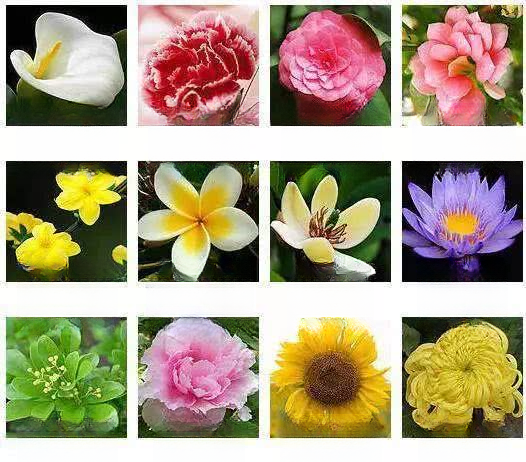
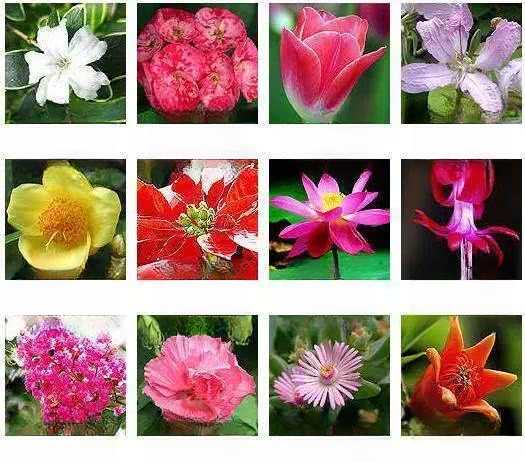
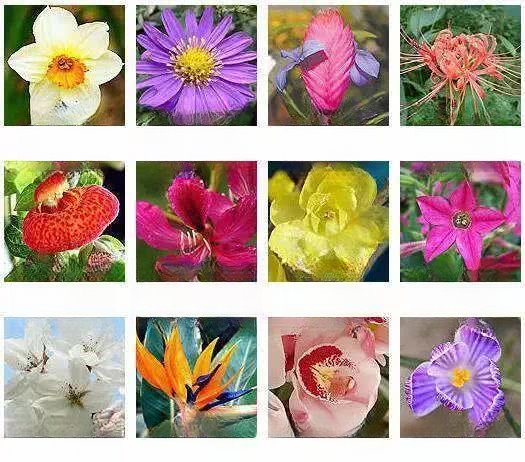
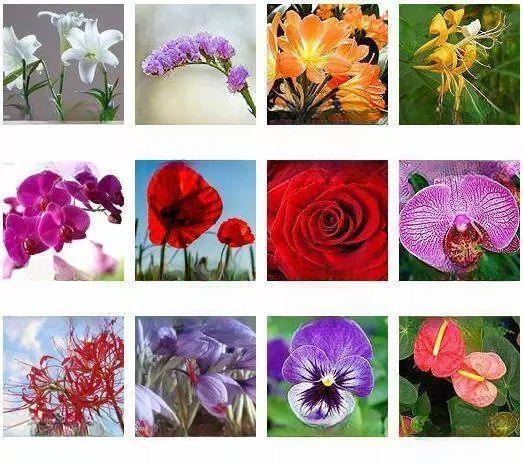
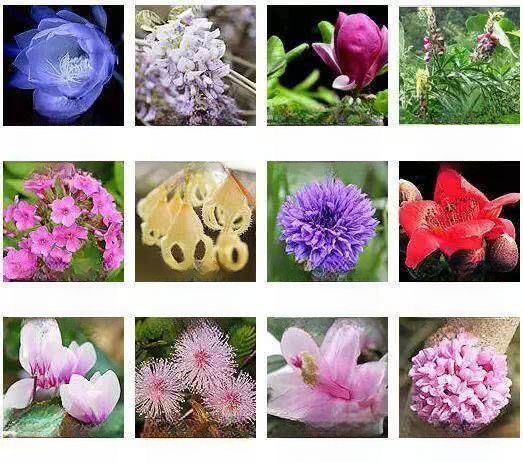
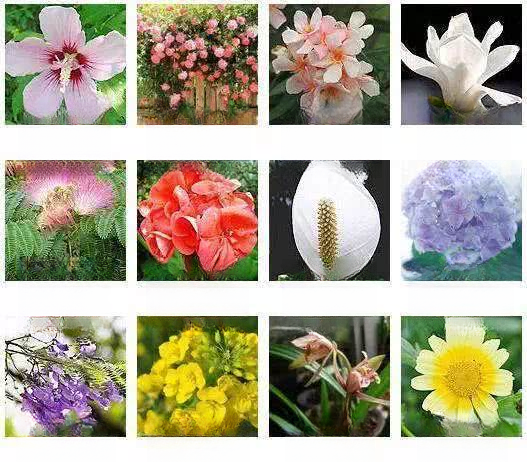
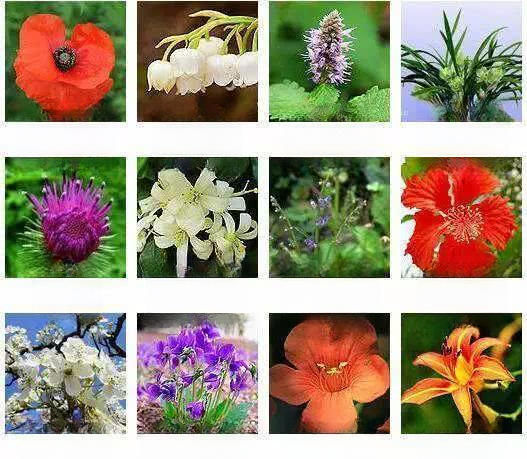
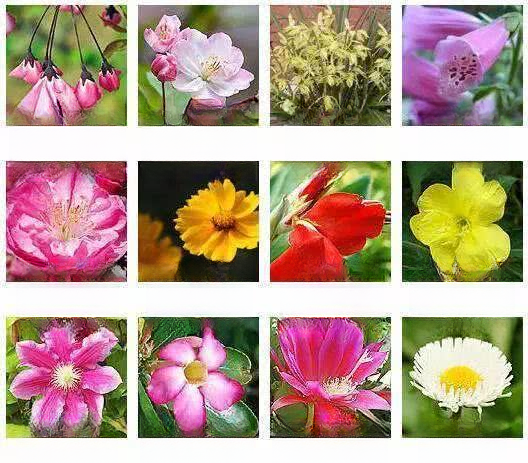
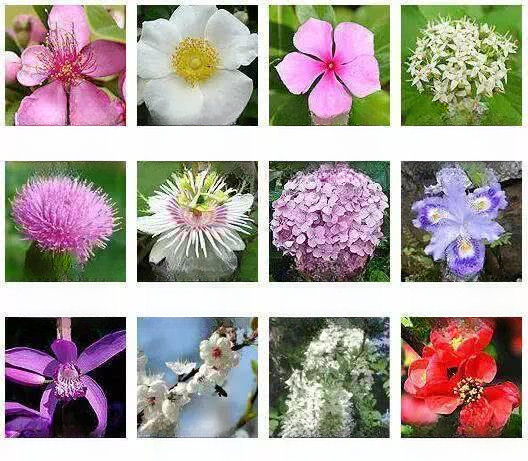
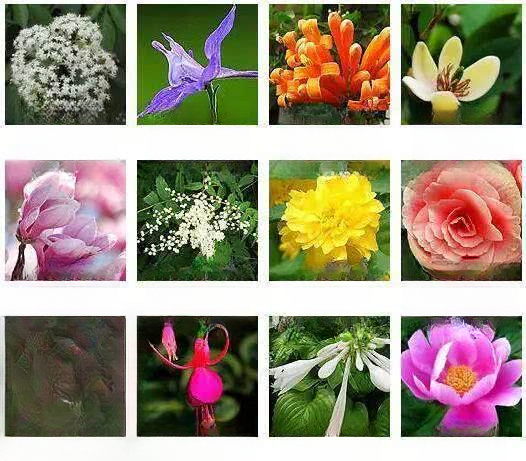
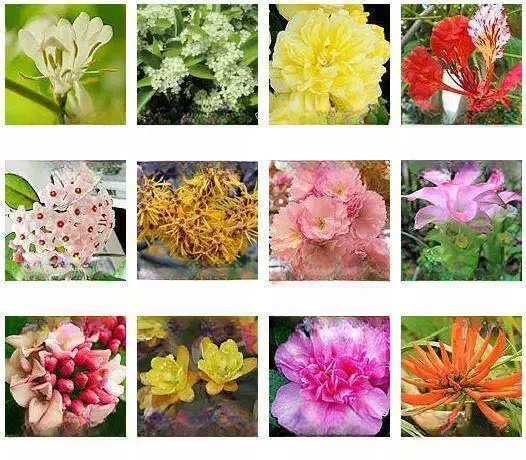
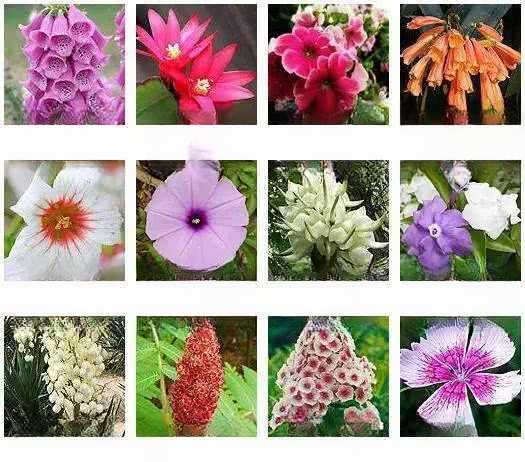
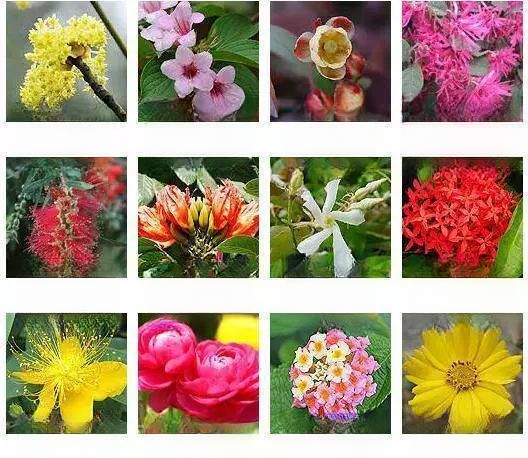
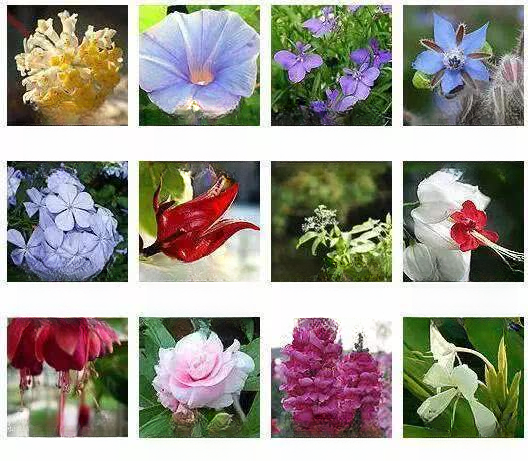
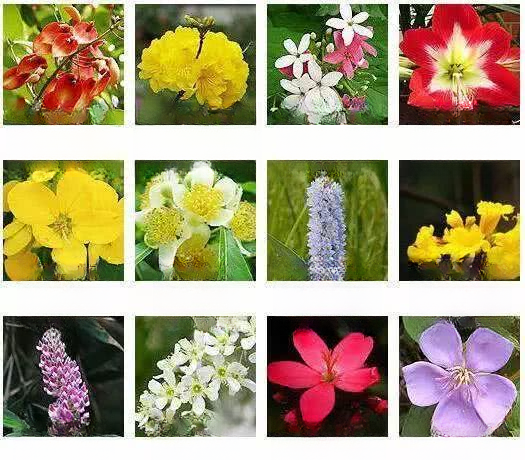
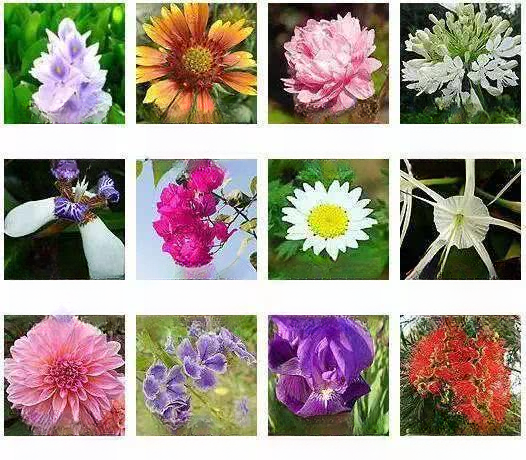
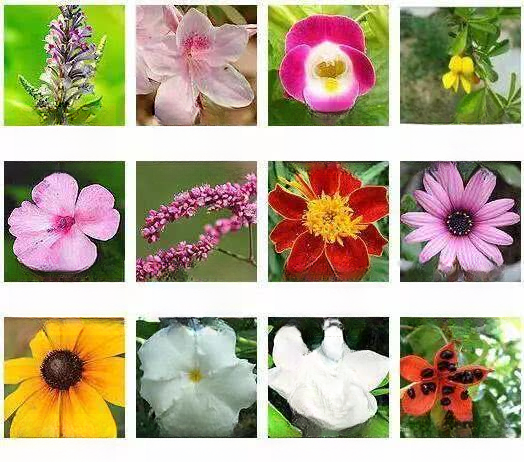
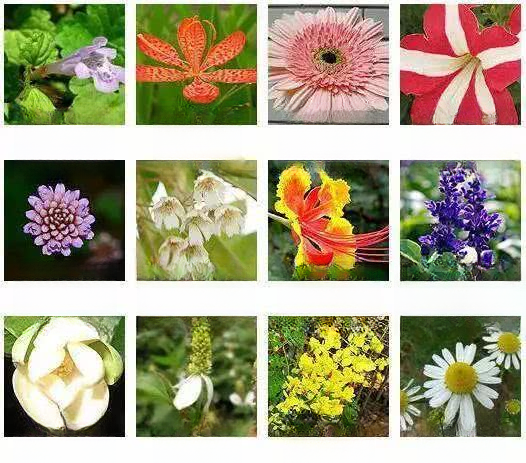
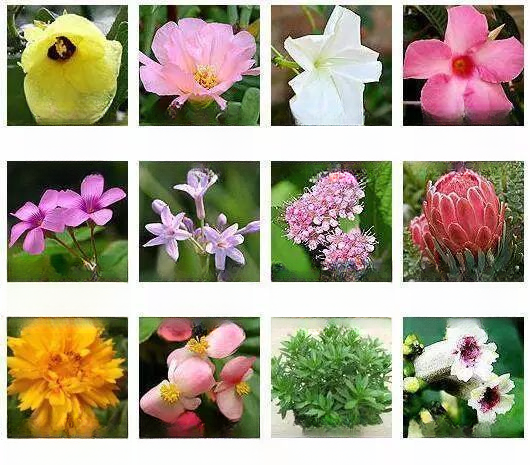
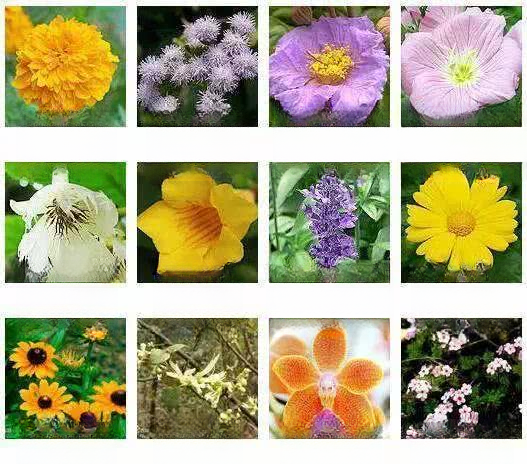
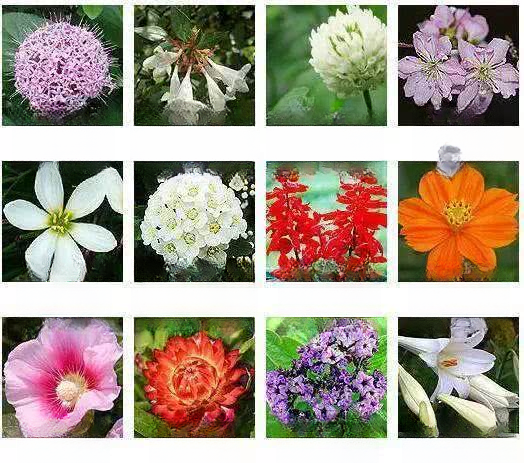
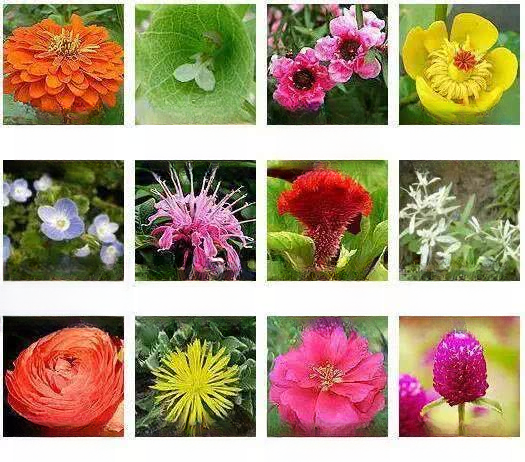
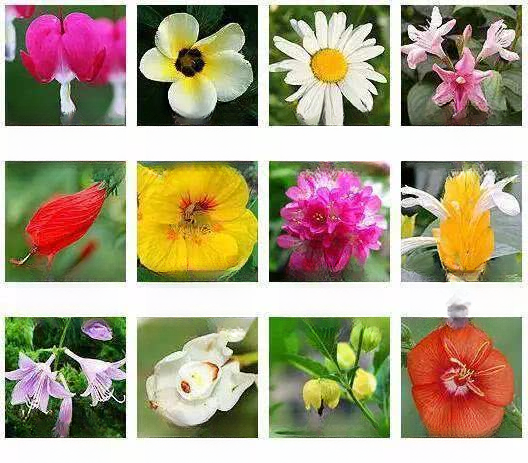
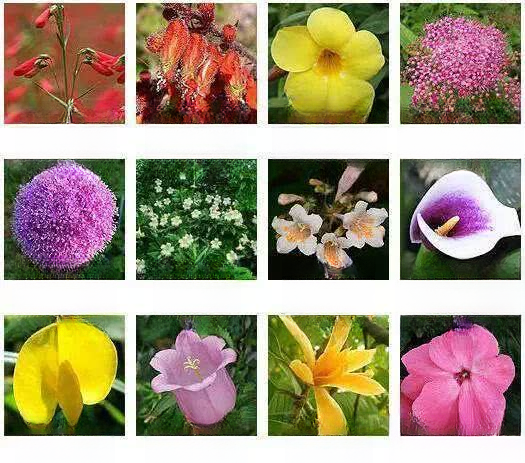
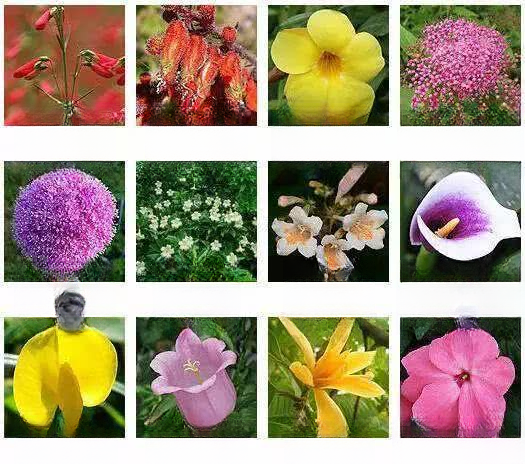
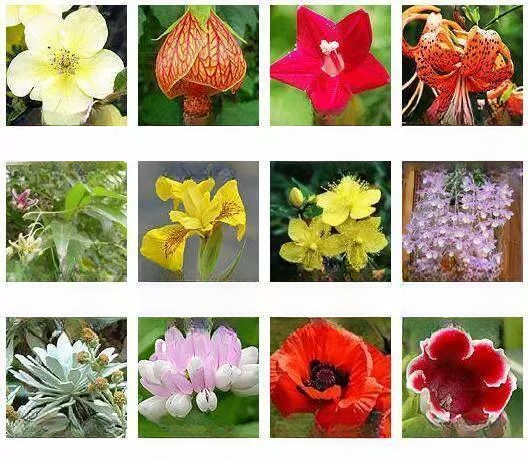
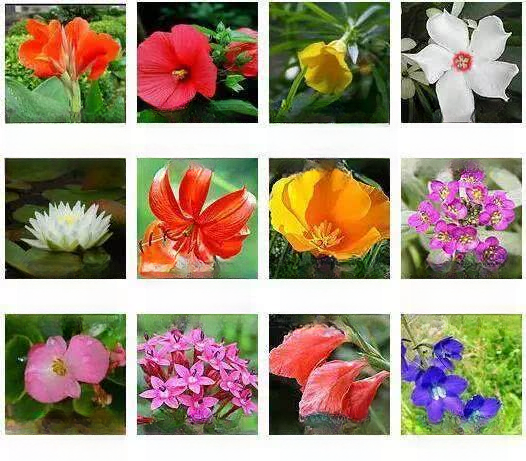
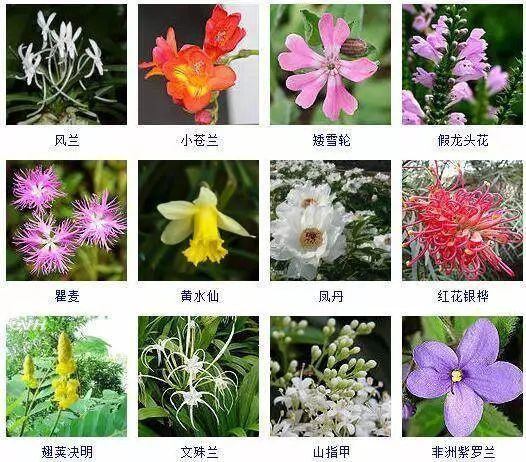
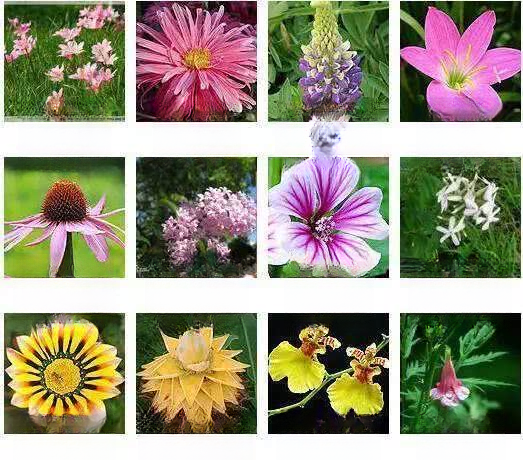
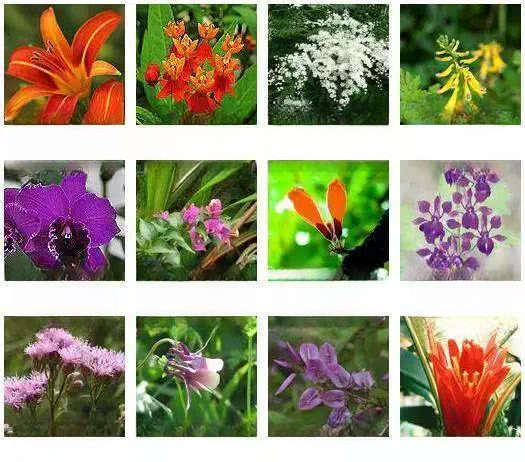
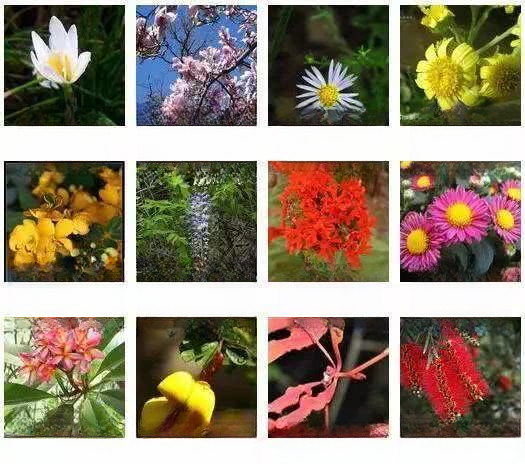
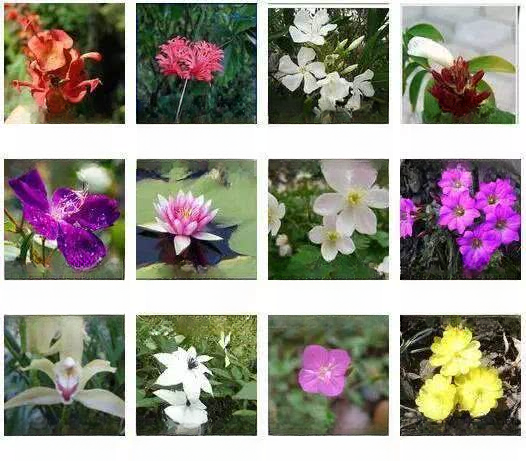
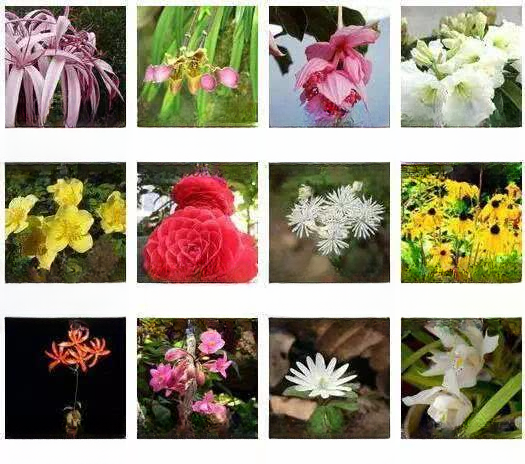
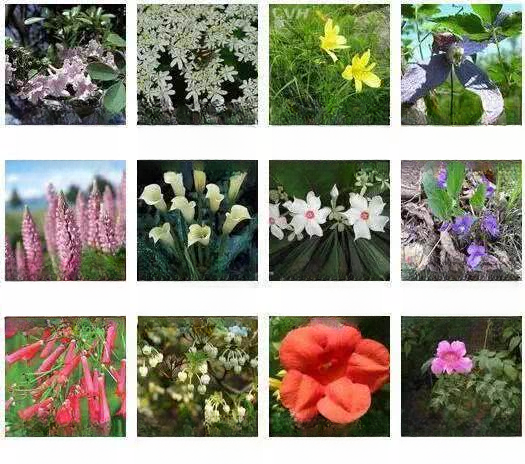
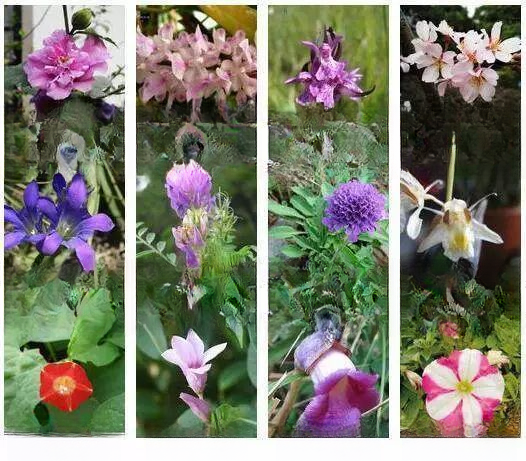
Insectivores:
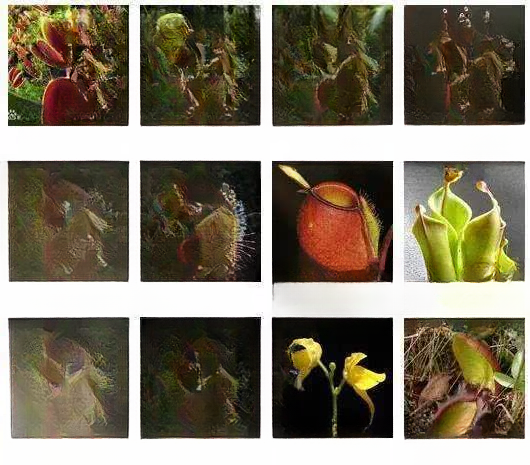
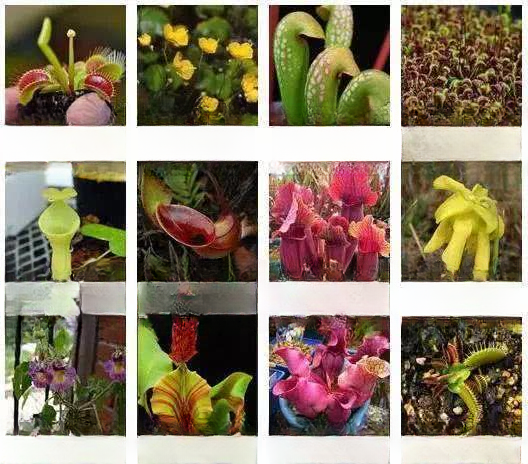
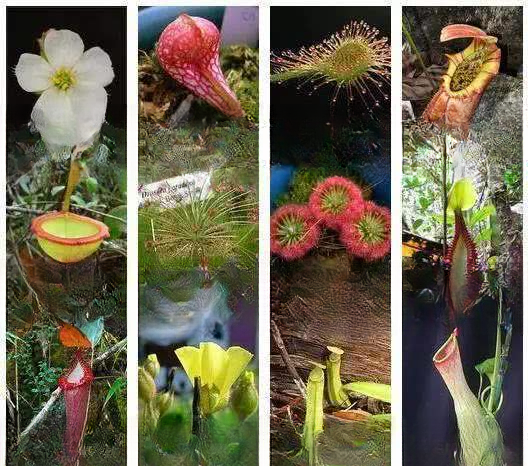
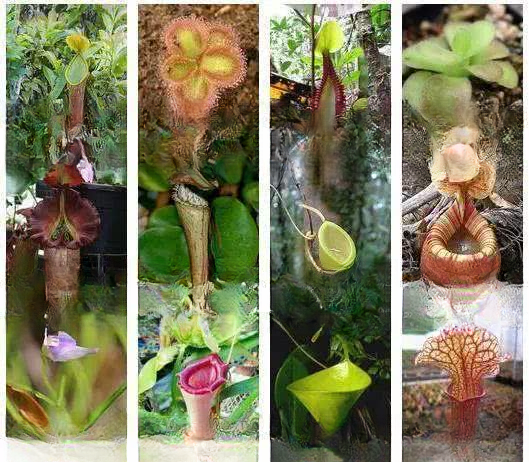
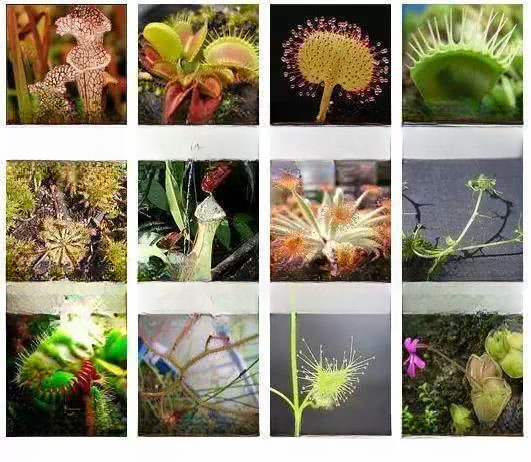
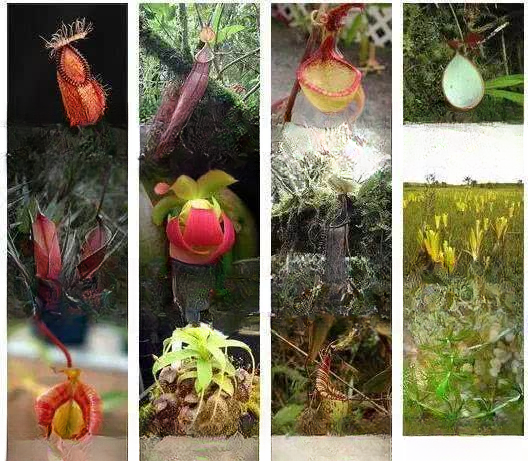
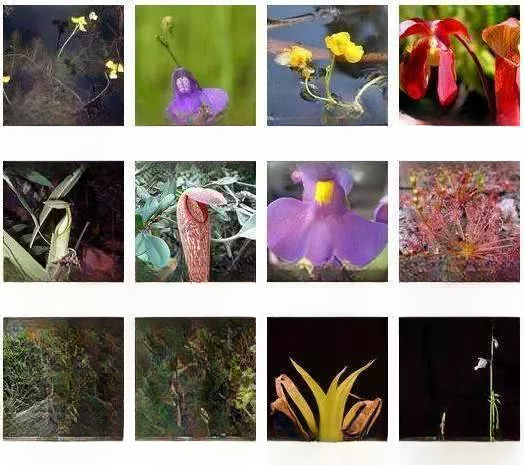
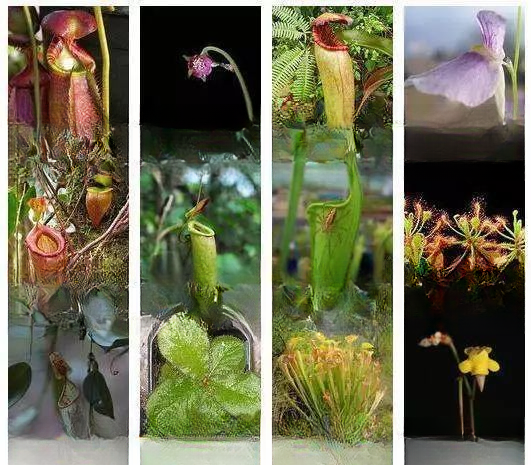
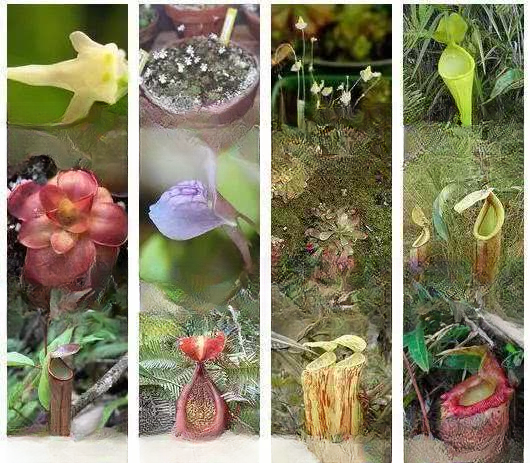
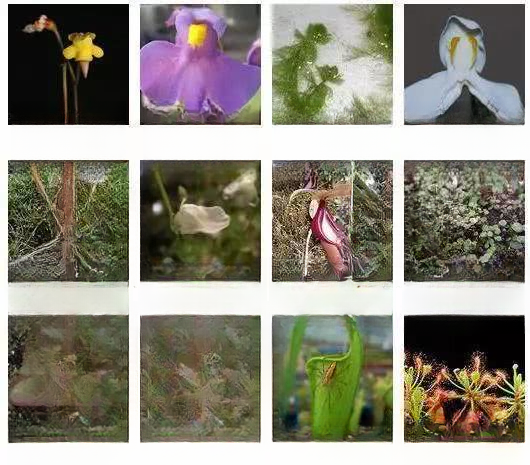
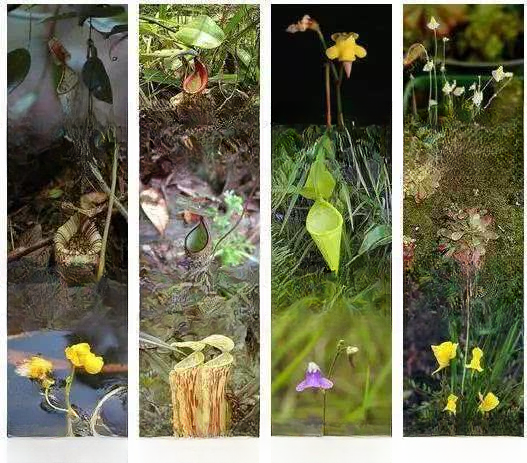
Are they enough for you to grow for a lifetime? Flower lovers, keep them for later study and share them with other flower lovers!